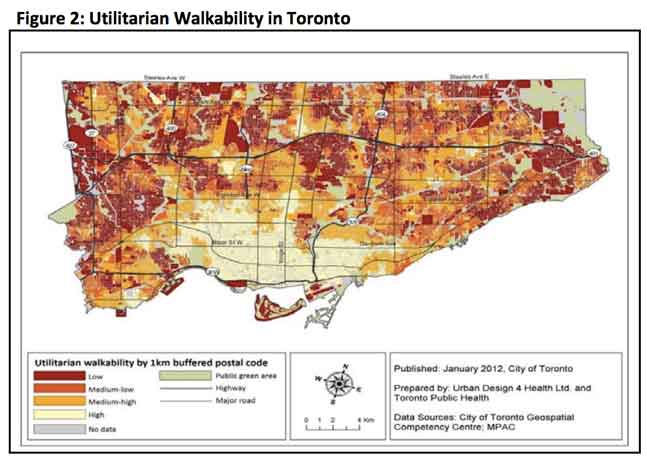The map above shows Toronto’s walkability, with the lighter portions indicating greater walkability (‘utilitarian walkability” being how easy it is to walk to do utilitarian things — get to work, shop — as opposed to for pure recreation).
It’s striking how much high walkability follows the boundaries of the old City of Toronto. There are a couple of additional areas of high walkability in two of the areas designated by the official plan as “centres”, in North York and Etobicoke, which reinforces the finding of a recent study that the “centres” concept is working to some extent.
“People who live in highly walkable areas walk more and are less likely to be in danger of obesity than those in car-oriented areas.”
“There is a strong latent demand among Toronto residents for more walkable features in their neighbourhoods.”
The report finds that even people who are car-oriented will walk more if they live in a walkable neighbourhood — and people who are walking-oriented will walk less if they live in a car-oriented neighbourhood. So urban design does play a role in shaping people’s behaviours, whatever their preferences are.
via Spacing Toronto
